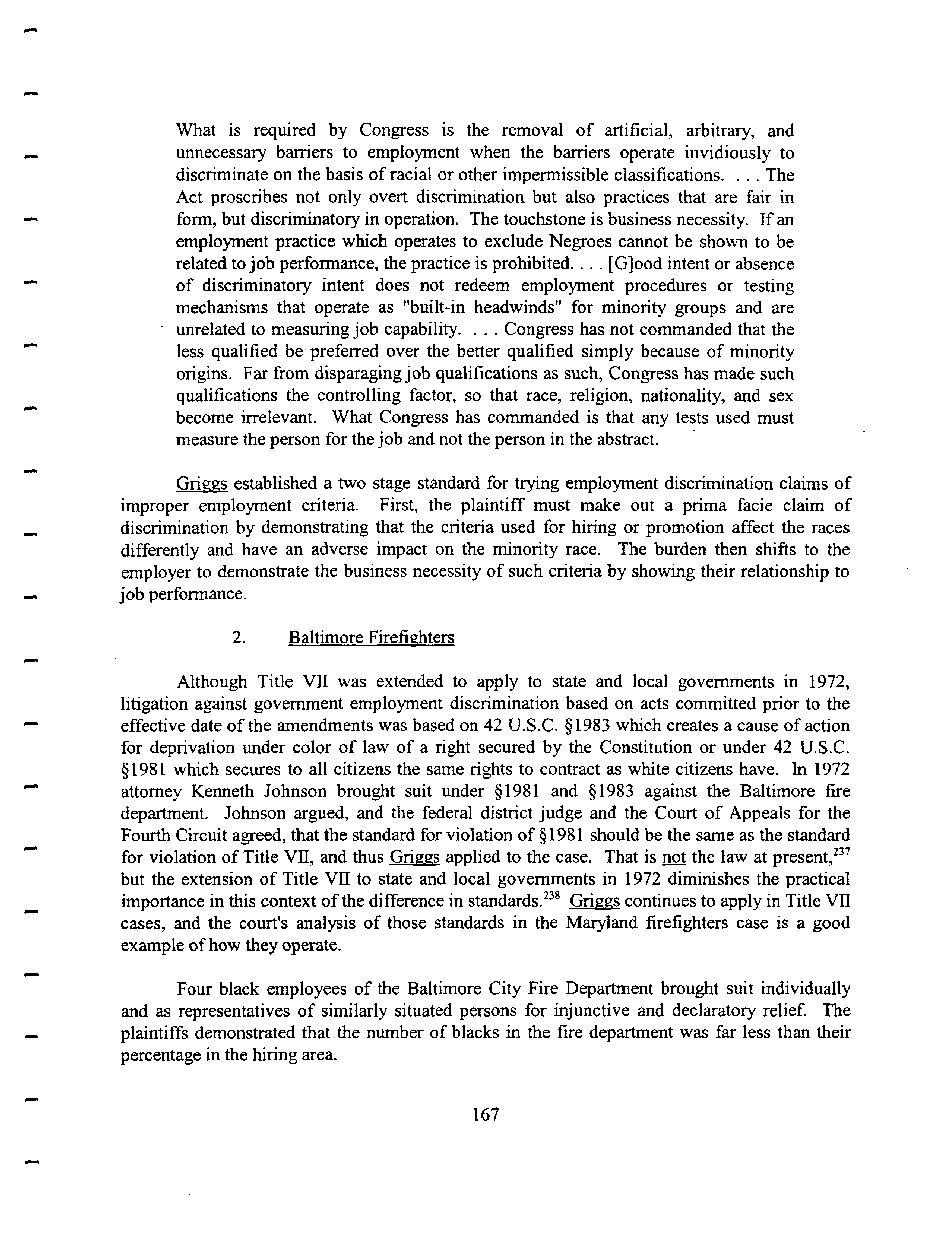|
What is required by Congress is the removal of artificial, arbitrary, and
unnecessary barriers to employment when the barriers operate invidiously to
discriminate on the basis of racial or other impermissible classifications. . . . The
Act proscribes not only overt discrimination but also practices that are fair in
form, but discriminatory in operation. The touchstone is business necessity. If an
employment practice which operates to exclude Negroes cannot be shown to be
related to job performance, the practice is prohibited. .. . [GJood intent or absence
of discriminatory intent does not redeem employment procedures or testing
mechanisms that operate as "built-in headwinds" for minority groups and are
unrelated to measuring job capability. . . . Congress has not commanded that the
less qualified be preferred over the better qualified simply because of minority
origins. Far from disparaging job qualifications as such, Congress has made such
qualifications the controlling factor, so that race, religion, nationality, and sex
become irrelevant. What Congress has commanded is that any tests used must
measure the person for the job and not the person in the abstract.
Griggs established a two stage standard for trying employment discrimination claims of
improper employment criteria. First, the plaintiff must make out a prima facie claim of
discrimination by demonstrating that the criteria used for hiring or promotion affect the races
differently and have an adverse impact on the minority race. The burden then shifts to the
employer to demonstrate the business necessity of such criteria by showing their relationship to
job performance.
2. Baltimore Firefighters
Although Title VTI was extended to apply to state and local governments in 1972,
litigation against government employment discrimination based on acts committed prior to the
effective date of the amendments was based on 42 U.S.C. §1983 which creates a cause of action
for deprivation under color of law of a right secured by the Constitution or under 42 U.S.C.
§1981 which secures to all citizens the same rights to contract as white citizens have. In 1972
attorney Kenneth Johnson brought suit under §1981 and §1983 against the Baltimore fire
department. Johnson argued, and the federal district judge and the Court of Appeals for the
Fourth Circuit agreed, that the standard for violation of §1981 should be the same as the standard
for violation of Title VII, and thus Griggs applied to the case. That is not the law at present,237
but the extension of Title VII to state and local governments in 1972 diminishes the practical
importance in this context of the difference in standards.238 Griggs continues to apply in Title VII
cases, and the court's analysis of those standards in the Maryland firefighters case is a good
example of how they operate.
Four black employees of the Baltimore City Fire Department brought suit individually
and as representatives of similarly situated persons for injunctive and declaratory relief. The
plaintiffs demonstrated that the number of blacks in the fire department was far less than their
percentage in the hiring area.
167
�
|

